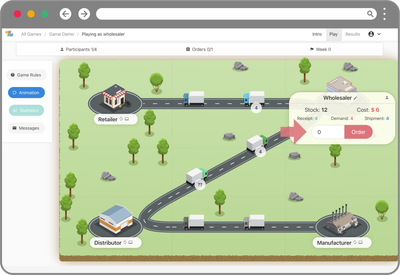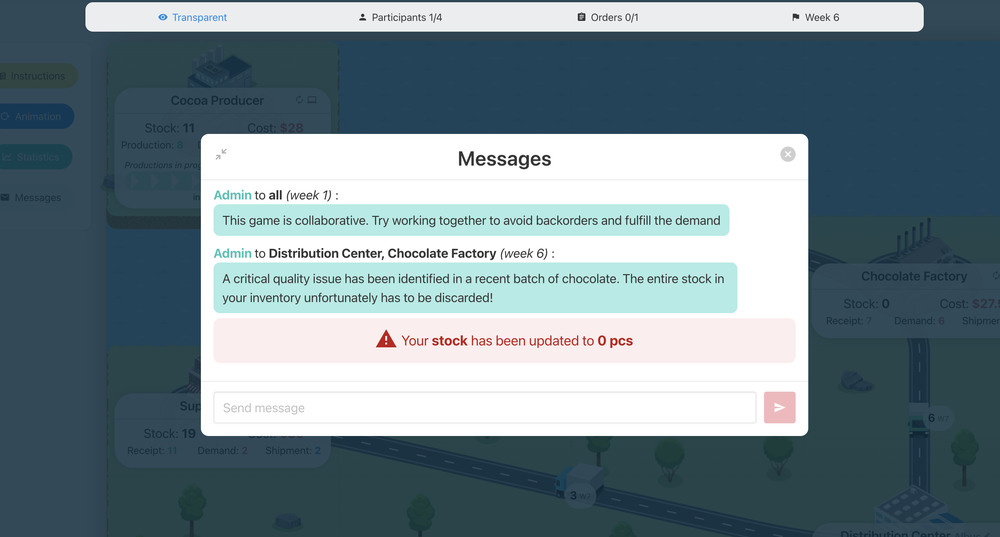What is the Chocolate Supply Chain game?
This template is built using our immersive online Beer Distribution Game, based on the iconic MIT simulation. This Food/Chocolate scenario is tailored for the FMCG and agricultural industries, and aims at simulating some events and constraints that happen in this sector.
The template is structured around 3 rounds of 15 weeks each, featuring different supply chain disruptions such as promotions, quality and delivery issues. Players will be joining as one of 4 roles: Supermarket, Distribution Center, Chocolate Factory and Cocoa Producer.
Who is it for?
Supply chain disruptions frequently appear in the press, part of today's "VUCA" business environment (Volatile, uncertain, complex and ambiguous).
It is important to train your team and students under "disrupted" scenarios, so they get a sense of the required strategies and mindset. Our chocolate supply chain game is built around this objective. It can help diverse teams, especially ones in a FMCG/food sector, train under a "disrupted" supply chain scenario.
This simulation can also be used by professors in engineering or business programs, to explain supply chain behavior and give students a continuous improvement mindset.
How to Use It?
You can have a look at our Complete Instructor Guide, giving you insights on how to create your session, invite participants, monitor the live games and debrief the results.
Each round lasts 15 weeks, corresponding to 20-25 minutes of playing time. A debriefing is held after each round, where participants can reflect about their experience and make parallel with their actual job.
The lead time is 2 weeks for the supermarket and distribution center, but 3 weeks for the chocolate factory and cocoa supplier. The stock cost is 0.5$/pc/week and the backorder cost is 1$/pc/week for all roles.
Round 1: players get to know the rules and scenario. It lasts 15 weeks (decisions) where players are not allowed to communicate. The supermarket experiences an increase of demand in week 3, corresponding to an unexpected promotion on chocolate bars. This creates the famous "bullwhip effect" as players try to secure their own inventory.
Round 2: players can now communicate and see each-others information. The final demand profile is a bit different but the overall quantity is the same (115pcs). On week 4, a supply disruption happens as the panama canal is closed for maintenance, increasing the supply lead time between the cocoa supplier and the chocolate factory to 4 weeks +/- 1 week. Players will need to adjust and reflect on the impact of this uncertain supply situation.
Round 3: again, players can now communicate and see each-others data. On week 6, a quality issue is detected on a batch of chocolate, so the stock of the distribution center and chocolate factory has to be discarded.
Key Learnings
Bullwhip Effect: Demonstrates how minor demand variations can escalate through the supply chain, impacting overall efficiency.
Supply chain disruptions: how a radical change of conditions can affect the proper functioning of the business.
Players will need to collaborate to go through the difficulties, and reflect on ways we could prevent or mitigate the effects of such disruptions.
Sign up as instructor to create a session using one of our supply chain game templates
Quickly create an account to get an overview of all the possibilities of our Beer Game / Logistics simulations.







